By Louise Irvine
One of the most challenging works of art to relocate to the new WMODA in Hollywood was our monumental Royal Doulton terracotta lion. It was modeled by John Broad at the Lambeth Studio in 1904 and the clay sculpture was cut into two parts to be fired in the kiln. It took four strong men to lift the lion’s massive head down from its pedestal so that special pallets could be made to transport it. Now we are designing a lion enclosure at the Hollywood museum inspired by a Victorian park.
Lions are the most familiar animals in British public sculptures with their symbolism of strength and courage. The “king of the beasts” is also a popular heraldic device in rampant or passant poses. Lying down with the head raised and paws stretched out in front, they are known as lions couchant. Three stone lions couchant guard the first public monument to Queen Victoria which was unveiled in Bath in 1838 to commemorate Her Majesty’s coming of age and coronation. Royal Victoria Park was opened by the princess when she was 11 years old and it is the first public park to carry her name.
Lions became a symbol of the British empire and were closely associated with Queen Victoria throughout her reign. Her favorite animal artist, Sir Edwin Landseer, was commissioned to model the bronze lions which surround Nelson’s Column in Trafalgar Square, London. They are among the largest and most famous sculptures in the lion couchant pose. London Zoo provided Landseer with a dead lion as a model for his clay sculpture and sketches can be seen in his studio. It took the artist nearly a decade to complete his commission and the four lions were finally all in place by 1867.
Queen Victoria was thrilled by daring lion-taming acts, particularly the show performed by the American animal trainer, Isaac van Amburgh. In 1839, she attended seven of his performances in six weeks at Drury Lane Theatre and she commissioned Landseer to paint the famous lion tamer in a cage surrounded by lions, tigers, and leopards. Later, she commanded the celebrated Lion Queen, Nellie Chapman, to perform at Windsor Castle. In 1850, Nellie married the circus showman, “Lord” George Sanger and worked with his new troupe of lions, often riding as Britannia in imposing pageants.
When Queen Victoria died in 1901, Sanger commissioned Doulton & Co to produce a terracotta memorial to the monarch for Newbury town center, which was surrounded by four monumental lions like Nelson’s Column. A live lion on a chain was present at the unveiling ceremony in 1903. John Broad sculpted the imposing statue of Queen Victoria and the lions which now reside in nearby Victoria Park. Broad modeled similar terracotta lions for other memorial groups, including the example at WMODA which is dated 1904. For some years, it stood beside the tennis court at Arthur Wiener’s Hamptons home before traveling to the museum where it has presided over several exhibitions highlighting Victorian ceramic art.
Read more about terracotta garden sculptures at WMODA
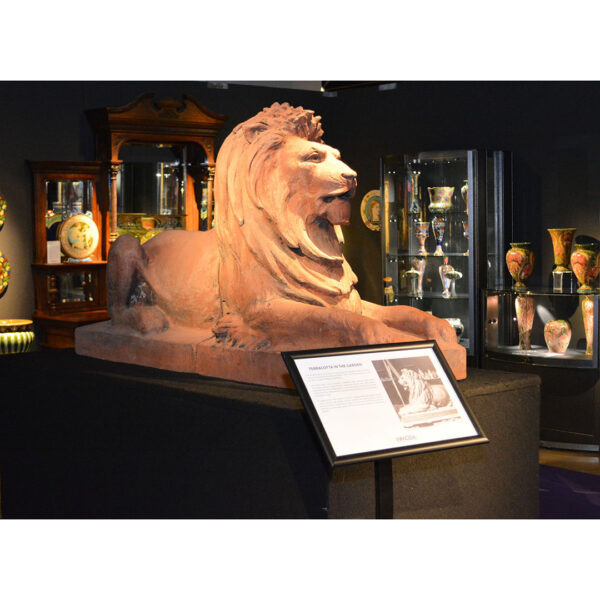
Royal Doulton Lion J. Broad
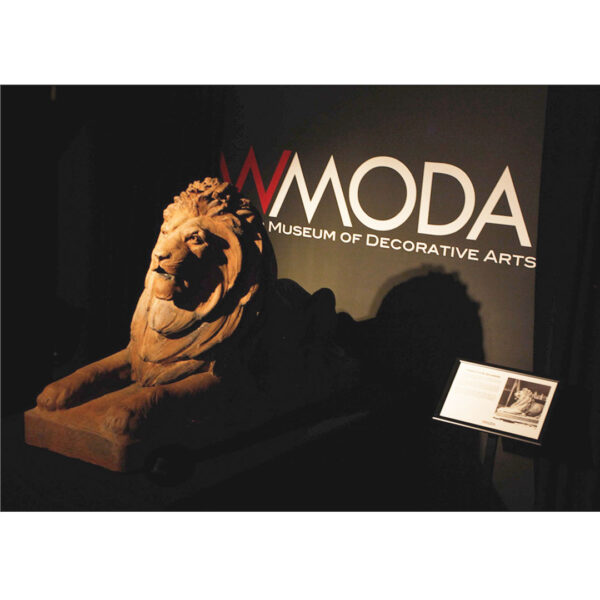
Royal Doulton Lion at WMODA
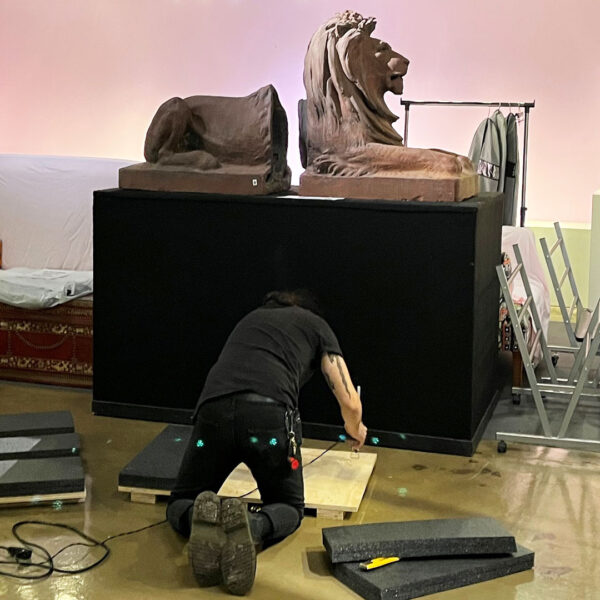
Royal Doulton terracotta lion being packed
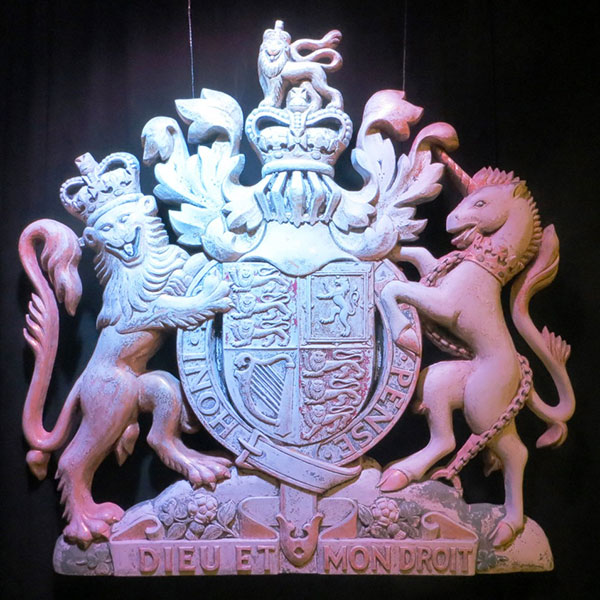
Royal Coat of Arms with Lion Rampant
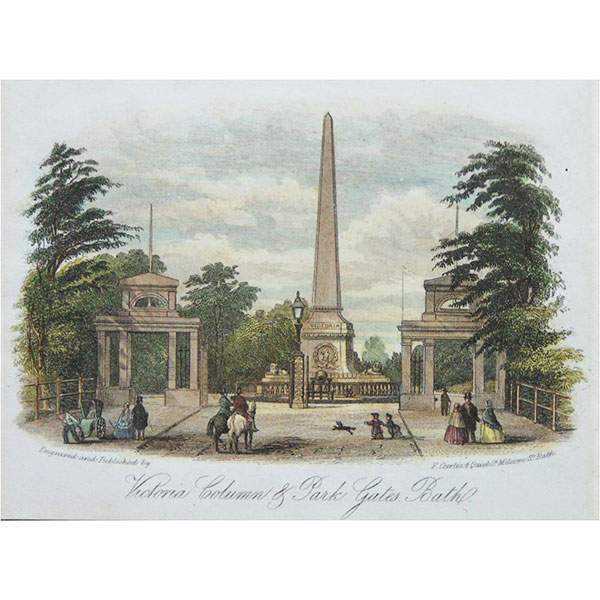
Victoria Column with Lions in Bath
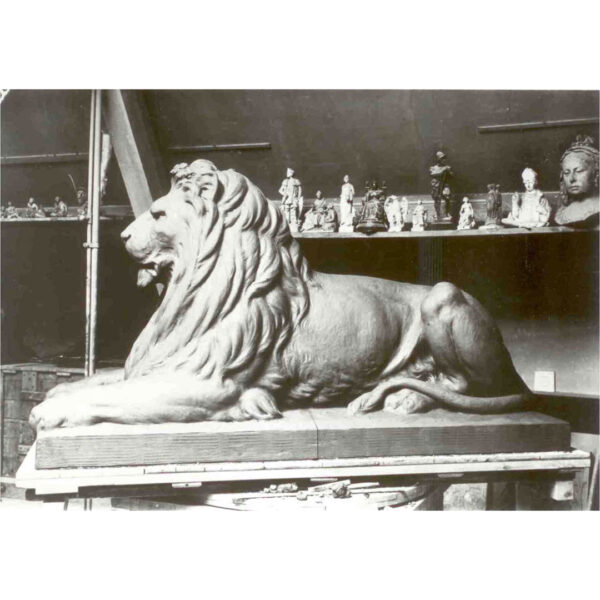
Royal Doulton Lion in John Broad's studio
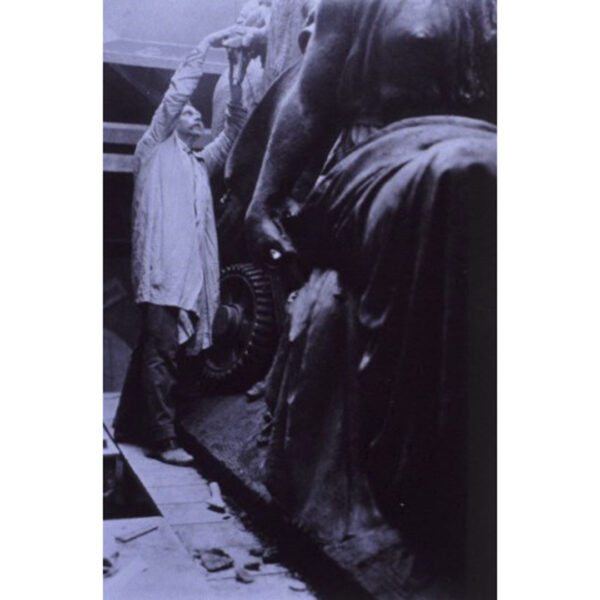
John Broad at work
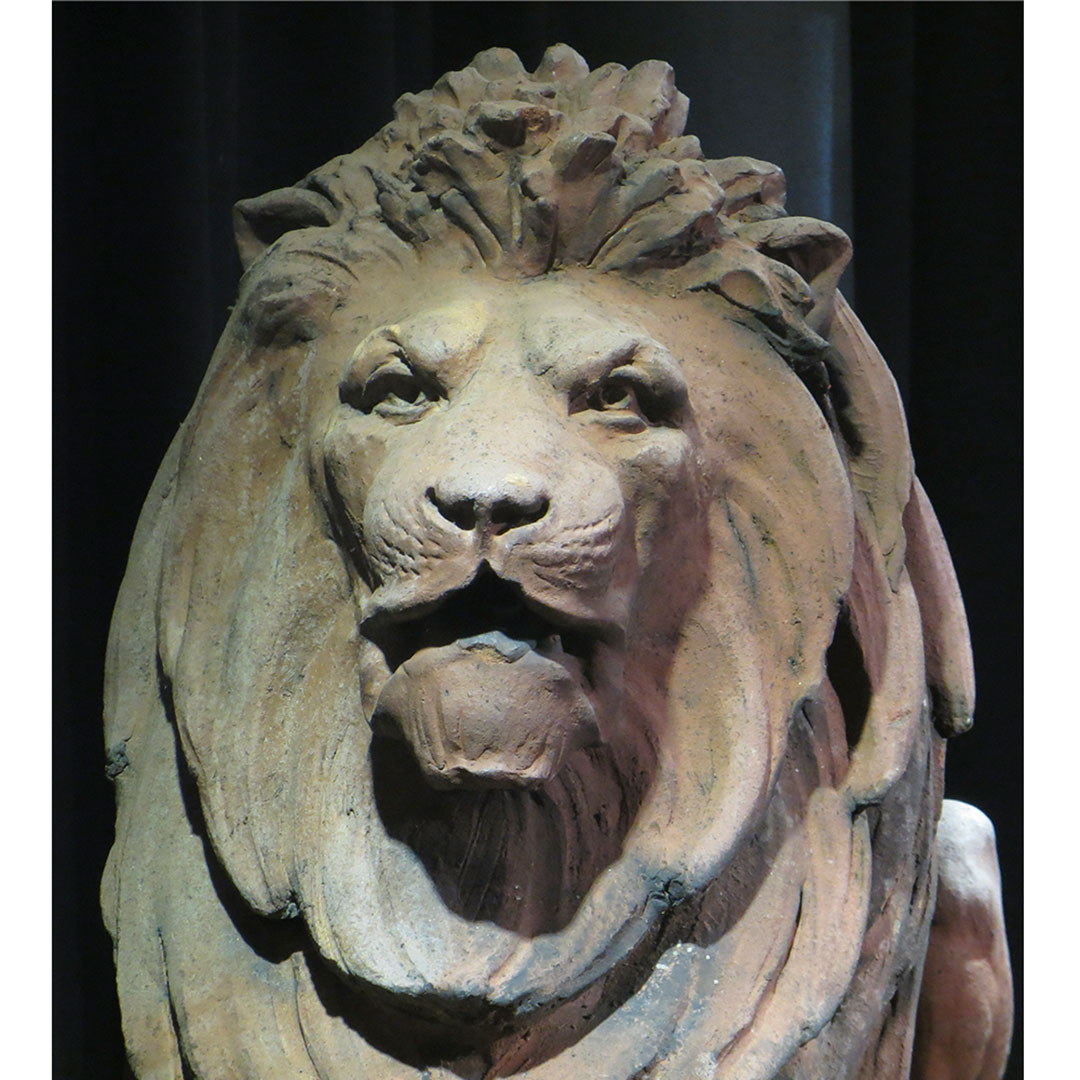
Royal Doulton Lion Head
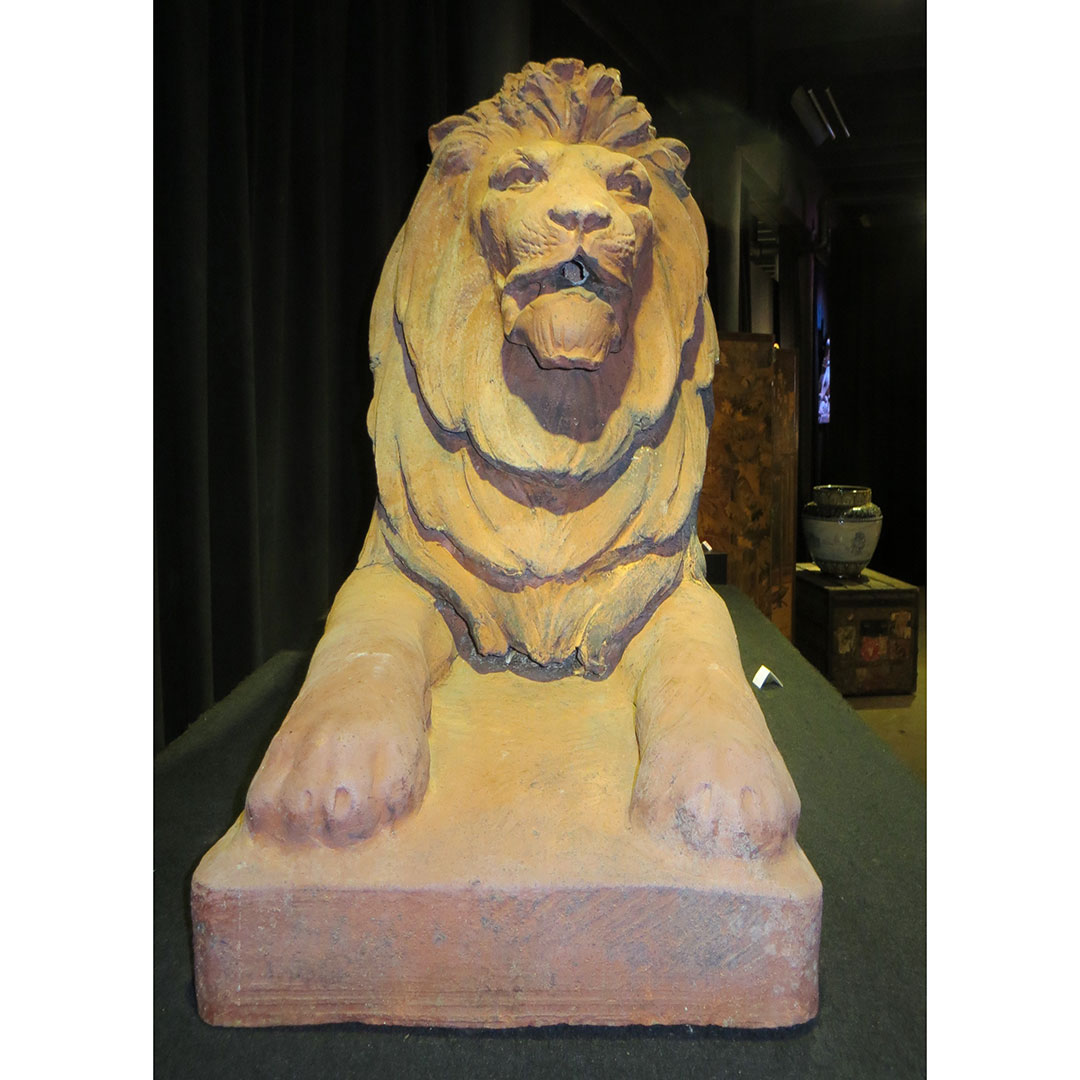
Royal Doulton Terracotta Lion
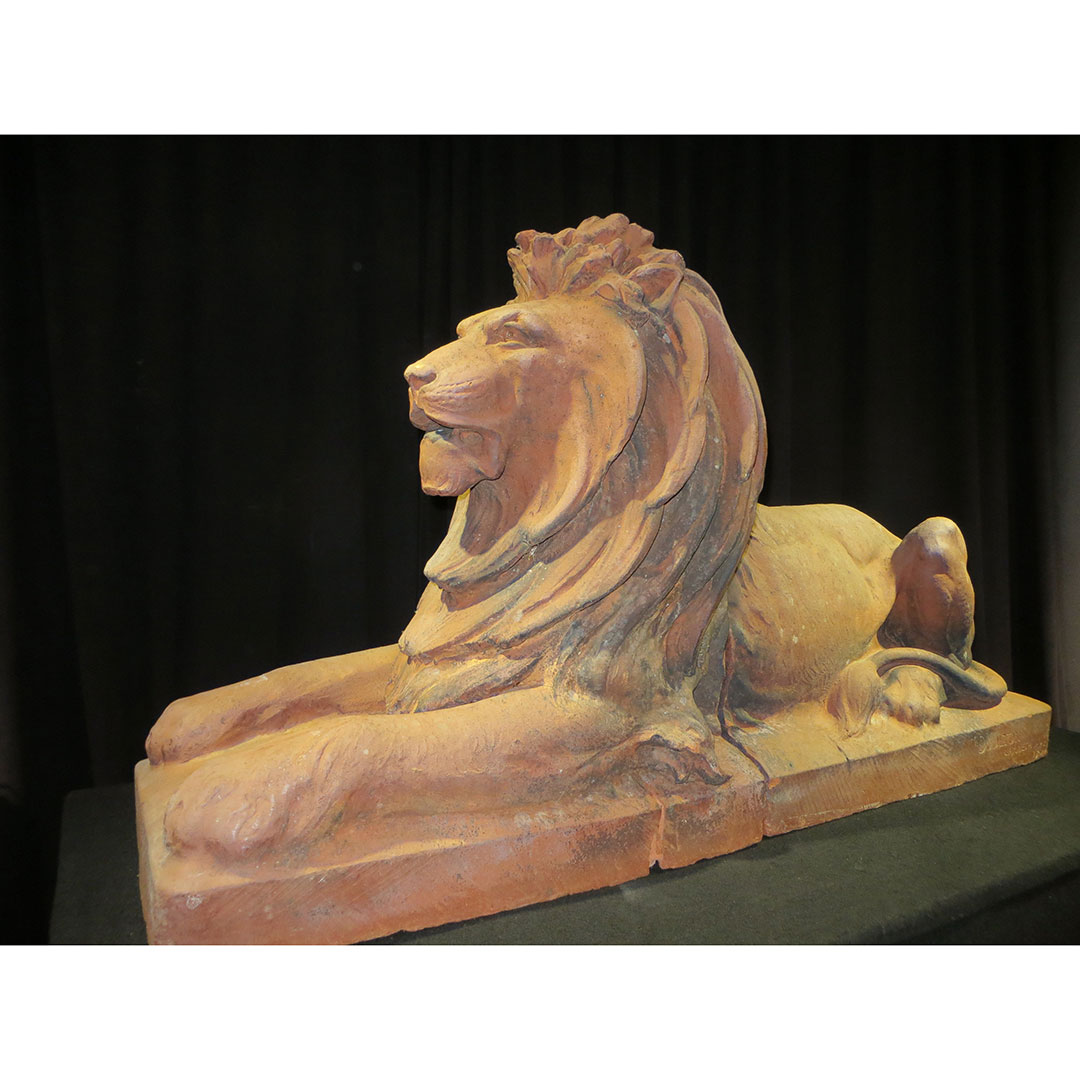
Royal Doulton Lion Couchant Pose
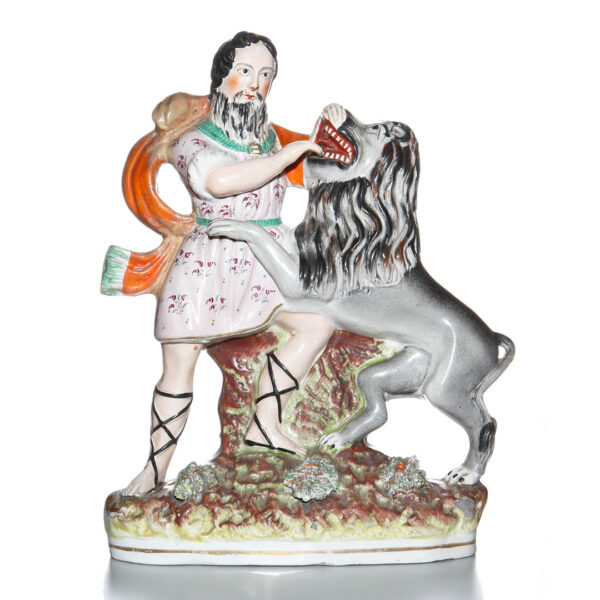
Staffordshire figure Isaac Van Amburgh
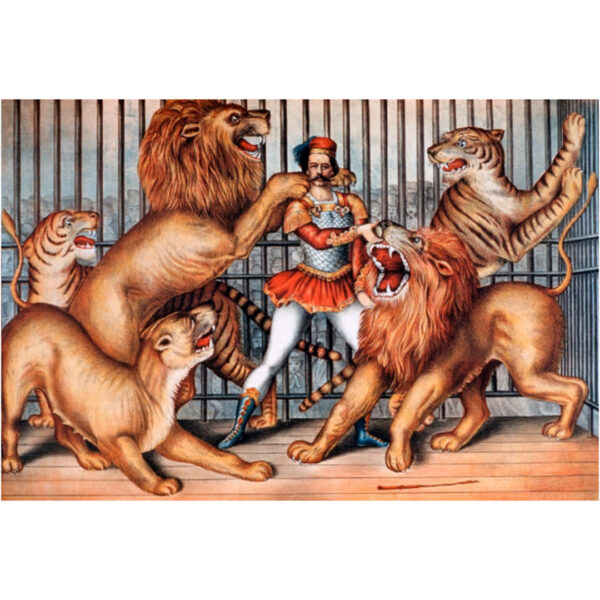
Lion Tamer
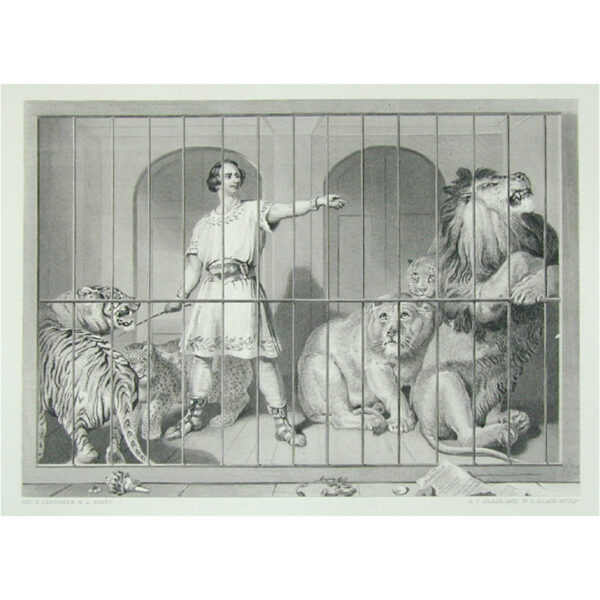
Isaac Van Amburgh
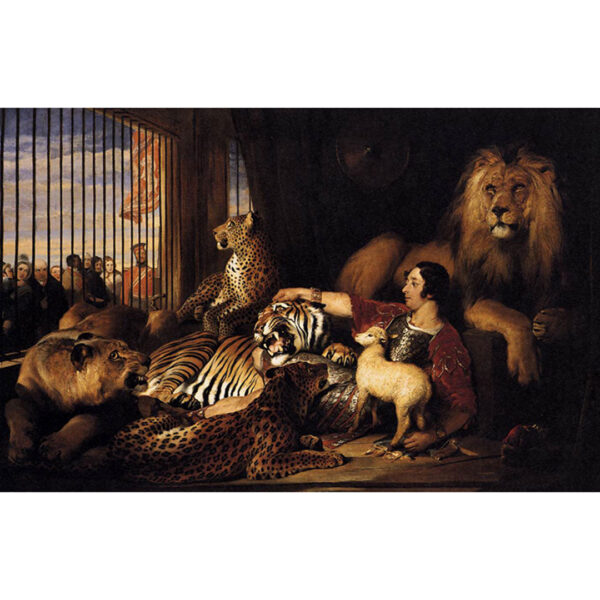
Isaac Van Amburgh E. Landseer
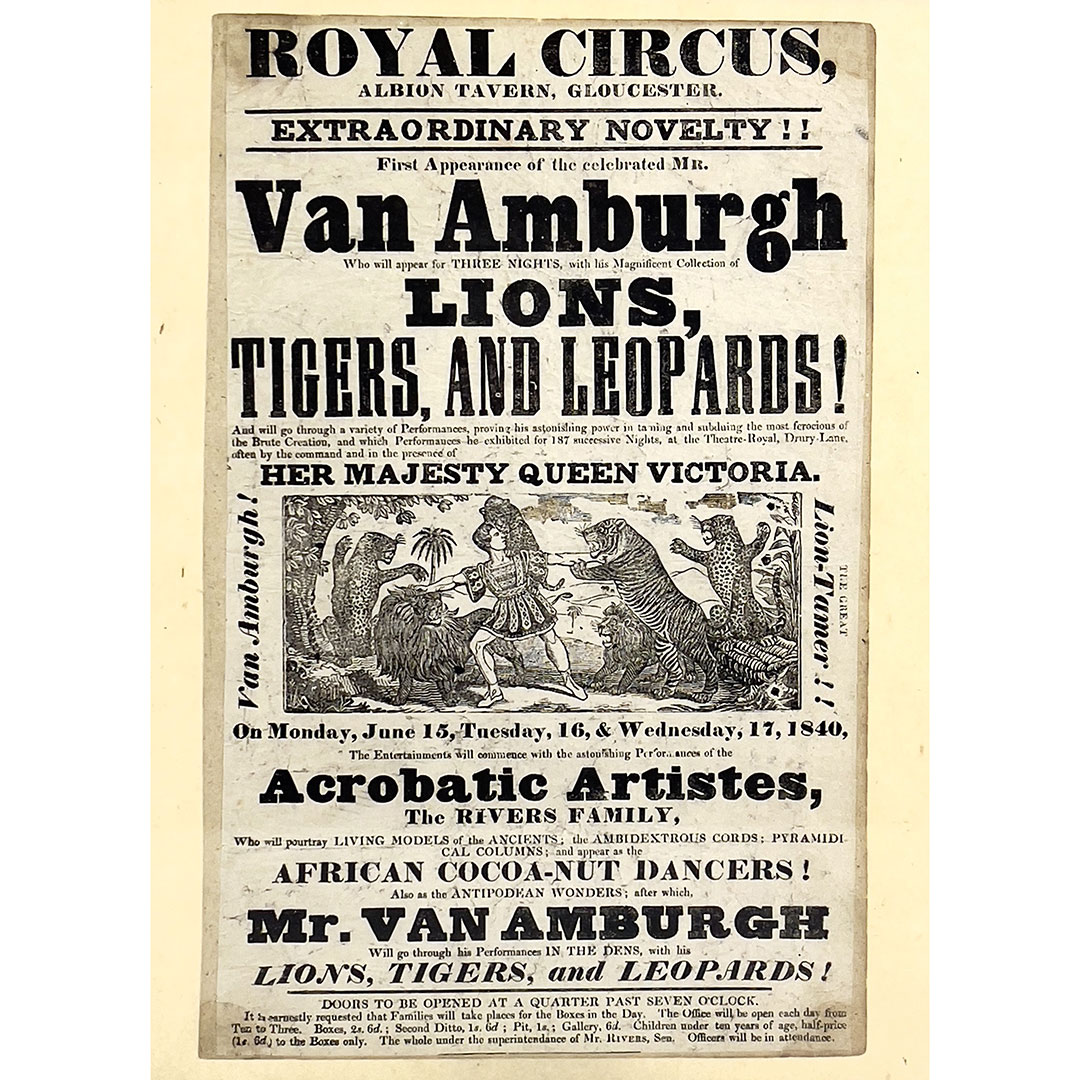
Van Amburgh Circus Poster
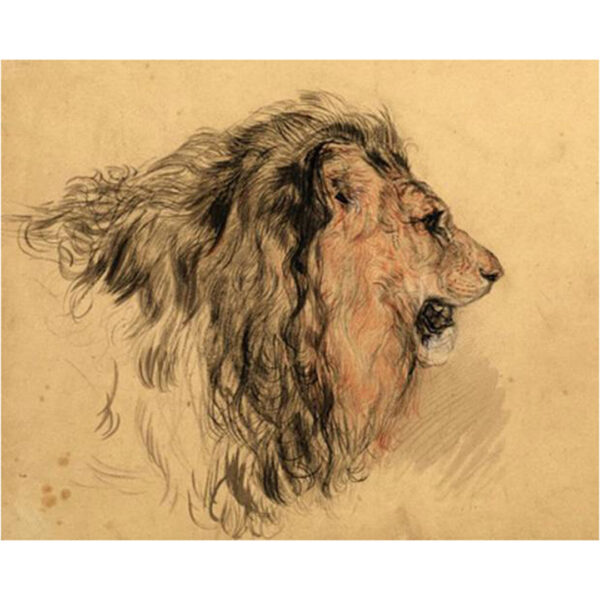
Head of a Lion E. Landseer, Courtauld
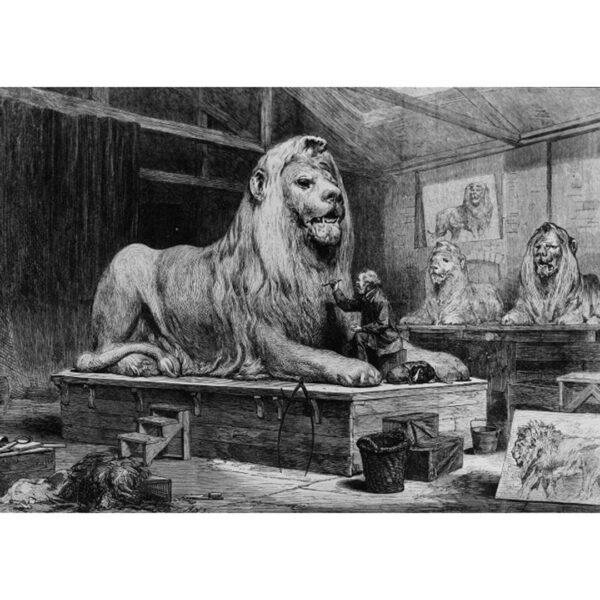
Landseer working on the lions
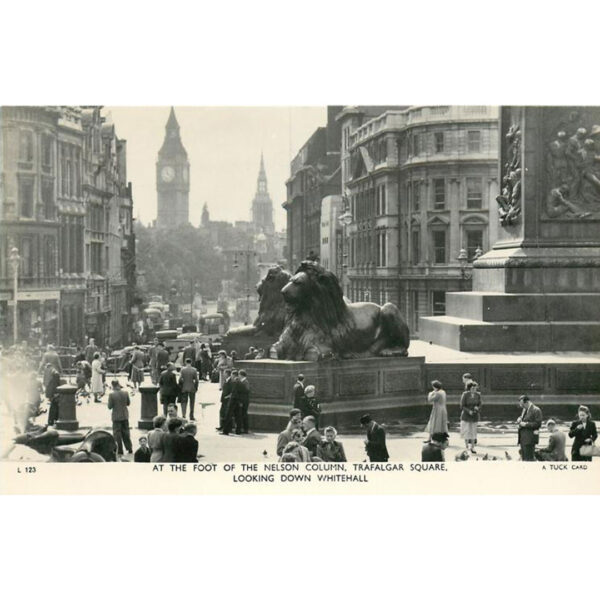
Nelson's Column Lions
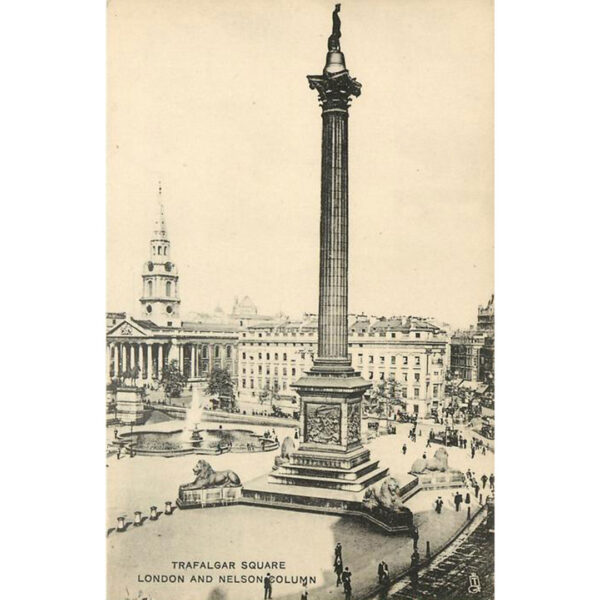
Nelson's Column London postcard
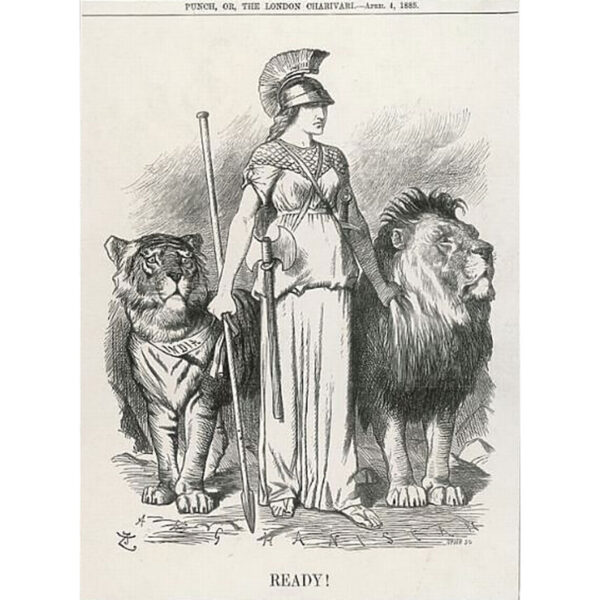
Punch Britannia Cartoon J. Tenniel
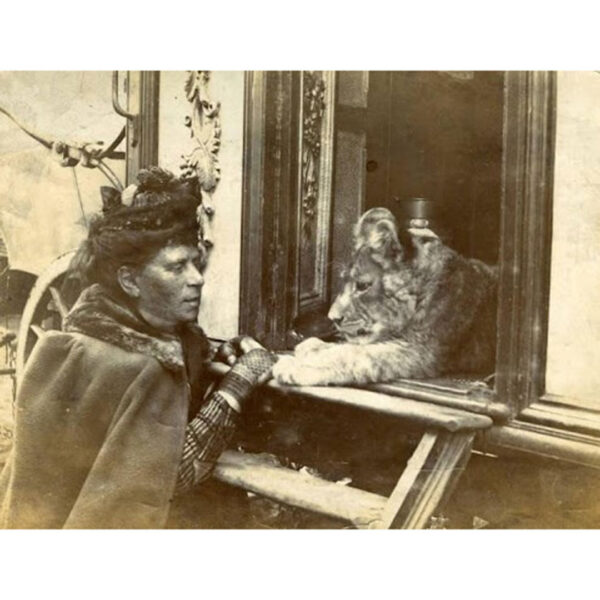
Nellie Chapman Sanger Circus Collection
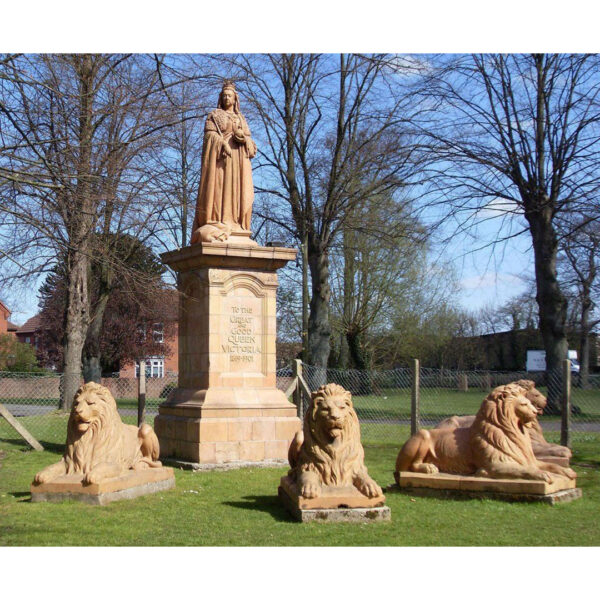
Queen Victoria and Lions Newbury Park Berkshire
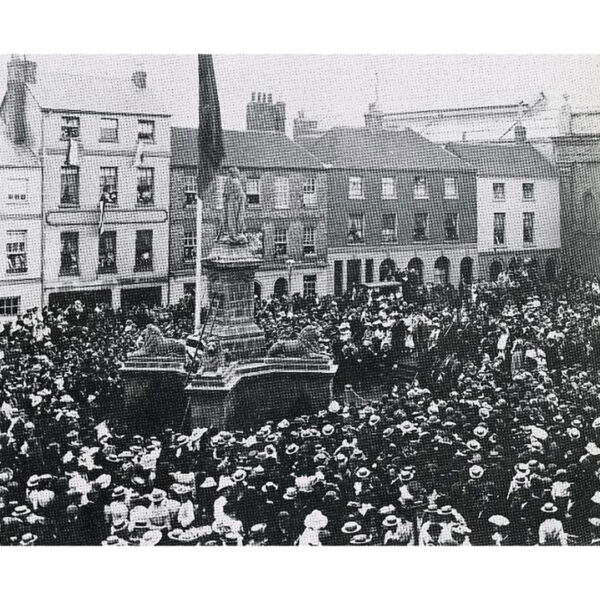
Unveiling Victoria Memorial in Newbury town center
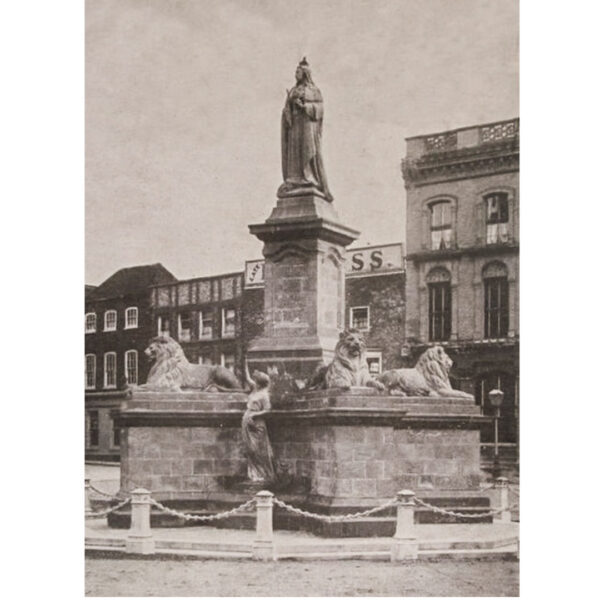
Victoria Memorial Newbury
